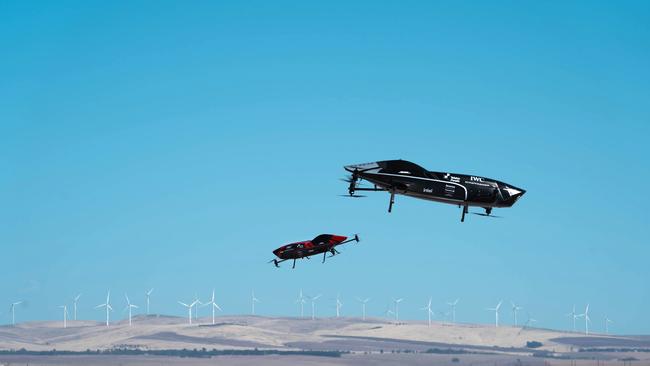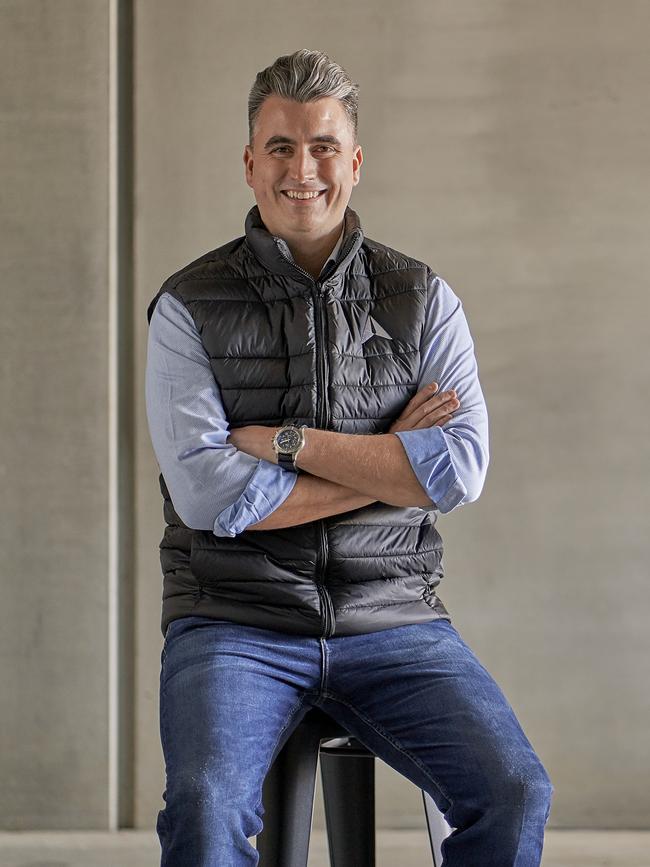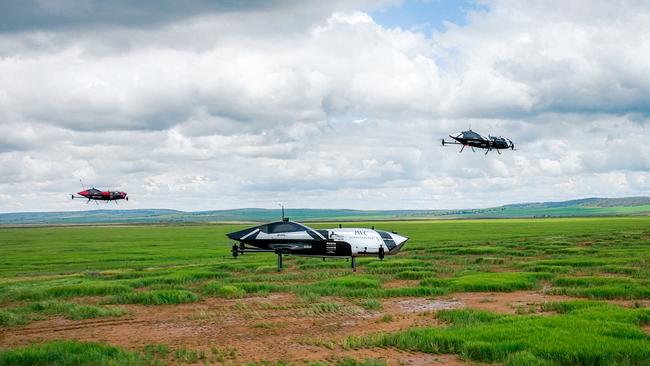Airspeeder shows the power of flying cars
With the future of cars facing regulatory hurdles, it makes sense to take to the air and use the unlimited lanes of traffic and get where you need to go in a matter of minutes, without stopping.

An Australian start-up has launched a racing series for flying cars, or what it calls “the Formula One of the skies”, as part of an ambitious plan to use the crucible of motor sport to develop and then mass produce flying cars for public use.
Matt Pearson, founder and CEO of Airspeeder, admits he got into the flying car business because he’d always wanted one “and I have enough time and money to do crazy things”.
When he realised that the combined pressures of high cost and tough regulations meant that he was only able to fly his oversized drones around in circles over a strictly delineated patch of ground, his next step became obvious.
“So how do you make money out of going around fast in circles? F1 seemed to be a good business model,” Pearson explained, during a presentation at the recent SXSW festival in Sydney.
“And then there’s the fact that people in the automotive industry, 120 years ago, that’s what they were doing, they were building race cars to help them develop the car; Henry Ford didn’t start with the Model T, he established his reputation in racing.
“So that’s how we got the crazy idea of going flying car racing.”
Airspeeder recently held its first two racing demonstrations, featuring crazy/brave pilot/racers (former F1 racer Bruno Senna has signed up to take part), over a salt flat in South Australia. Each vehicle is 5m long, around the size of an F1 car, and they look like race cars, except with propellers where wheels should be.
The company had built 12 very expensive examples and now has five left, after a “couple of pretty expensive days” of testing and racing.
“When we tell people what we’re doing, everyone asks, ‘when can I get one, I want one’, and the answer is… very soon,” Pearson pledged.
“The rest of the flying car industry is going down the kind of Uber model, flying taxis, but 99 per cent of cars are privately owned and the instinct is to want one of these yourself.
“The first step will be basically flying hypercars, which will cost about the same as the top Ferraris, maybe a few million dollars, then maybe a flying Aston Martin, around $400,000, and then the price will come down, it’s just what Tesla did, starting with the Roadster, then the Model S and now you get to the Model 3, which people can afford.”
Obviously there are some serious regulatory hurdles to be leapt over, and Pearson admits that the world of aviation does not move as fast as the world of cars, “we’re still flying around in things designed in the 1960s”, but he says the regulators are catching up to the tech, and he expects some “heavy duty” legislation to be changed in the US in the next year or so.

“Basically when that happens, you’ll only need 20 hours of flying experience to pilot a light flying aircraft, which is crazy when you think that you need 120 hours of driving to get a licence for a car in Australia, but the fact is these flying vehicles are easy to fly, and there are already video-game versions that allow you to learn how, but they are hard to drive fast,” he says.
The attraction of a whole new kind of motorsport, using vehicles that are properly loud – while Airspeeder’s flying cars are partly electric, they also use an old-school turbo generator, which sounds like a jet engine – is bringing not only experienced drivers like Bruno Senna into the flying car world, but big car companies as well.

Pearson says Aston Martin, Porsche, Hyundai and Toyota are all working on flying cars of their own, and he expects the big names of global motorsport to get involved in his form of “elevated motor sport”.
“I’m talking the very top tier, they think of this as redefining what a car can do, and they don’t want to be left out,” he said.
“In our first race, we had three overtakes in the first 60 seconds, including the world’s first ever ‘undertake’, where one driver went straight underneath another, it’s going to take racing to a whole new place, and who wouldn’t want to watch F1 in three dimensions?”
Pearson also expects his vehicles to have a profound effect at ground level, once they become commonplace, and affordable.
“All the major cities in the world are at war with the car, it’s happening now – why do you think Elon Musk is building tunnels, he knows what’s coming – and we give so much space to cars, we just don’t need them all, so we will take to the air, where we will have infinite lanes of traffic and you can get where you need to go in five minutes, without stopping,” he enthused.
“It’s just going to be a better world.”
.



